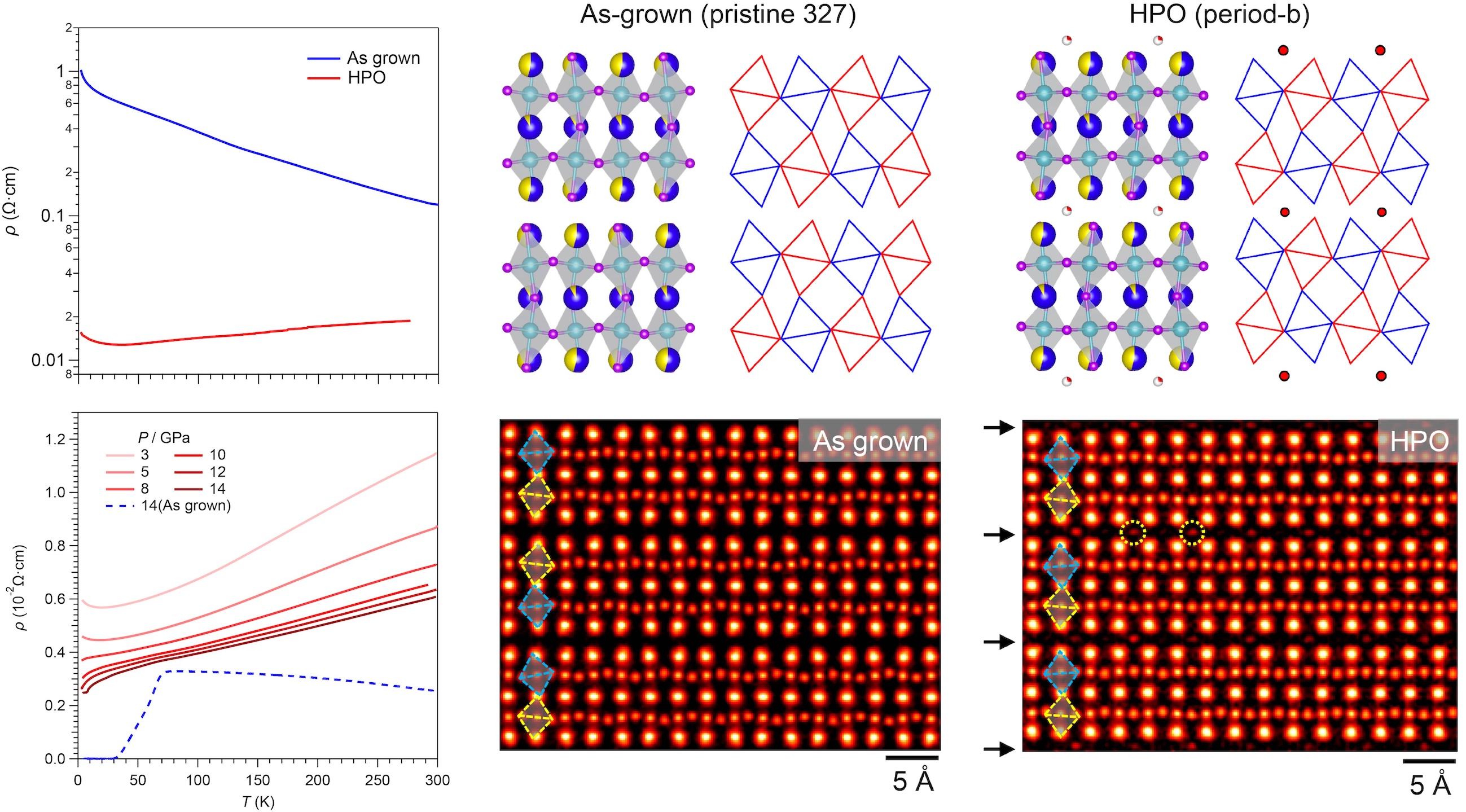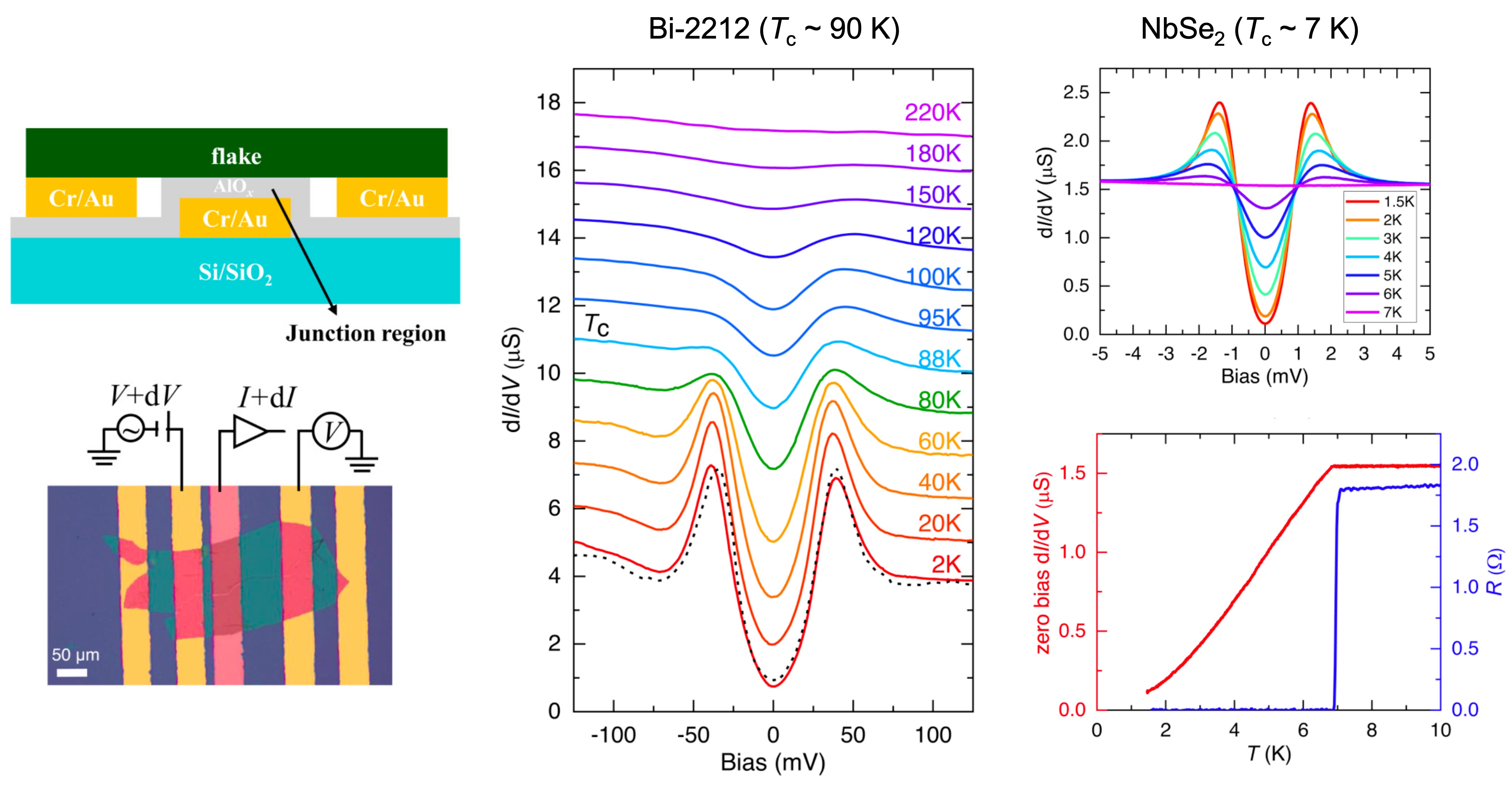Research Areas
My research focuses on developing novel techniques to understand the fundamental principles of strongly correlated systems. Below are the key areas of my research.
Nickelate Superconductors
Nickelate superconductors are a class of transition metal oxides that exhibit high-temperature superconductivity, similar to cuprates. The most well-studied compounds belong to the rare-earth nickelate family, particularly the infinite-layer nickelates RNiO2 (R = La, Nd, Pr, etc.), and recently the Ruddlesden-Popper phase bilayer nickelate La3Ni2O7. Nickelate superconductors provide a new platform for exploring unconventional superconductivity, multi-orbital correlations, and the interplay of charge-transfer and Mott physics. Their discovery has expanded the search for high-temperature superconductors beyond cuprates.

Seeing the vacancies
In this work, we develop an energy-filtered version of multislice electron ptychography, assisted by electron energy-loss spectroscopy, to address the most relevant atomic orbitals and the role of atomic deficiencies in La3Ni2O7-δ. We reveal the preferential occupation of vacancies on the inner apical oxygen site, and statistically determine the nanoscale concentration of these vacancies. Besides, we demonstrate the strong charge-transfer characteristics of La3Ni2O7-δ, with hole carriers that are self-doped from Ni sites into O sites. These observations will assist in further development and understanding of superconducting nickelate materials, while our imaging technique for quantifying atomic deficiencies can also be widely applied in materials science and condensed-matter physics.

Ordering of interstitial oxygens
In this work, we show that annealing La2PrNi2O7 under high oxygen pressure incorporates additional oxygen atoms, which self-organize into a stripe-ordered superstructure reminiscent of the “stage-ordering” seen in La2CuO4+δ superconductors. Strikingly, however, superconductivity is entirely suppressed in the oxygen-ordered state of La2PrNi2O7+δ, in stark contrast to its cuprate analogue. This contrasting behavior underscores the multi-orbital character and intertwined orders in bilayer nickelates, where carrier doping through interstitial oxygen atoms proceeds in a more intricate manner than in cuprates.
Collaborators
Related Publications
- Dong, Z., Huo, M., Li, J. et al. Visualization of oxygen vacancies and self-doped ligand holes in La3Ni2O7−δ. Nature 630, 847–852 (2024). https://doi.org/10.1038/s41586-024-07482-1
- Dong, Z., Wang, G., Wang, N., Dong, W. et al. Interstitial oxygen order and its competition with superconductivity in La2PrNi2O7+δ. Nature Materials 24, 1927–1934 (2025). https://doi.org/10.1038/s41563-025-02351-2
Novel Computative Imaging Techniques
Multislice electron ptychography is an advanced imaging technique used to obtain high-resolution three-dimensional structural information of a sample at the atomic scale in-plane and nanoscale out-of-plane. This technique solves the multiple scattering problem of electrons, reconstructing the phase information and structure of the sample by scanning a convergent beam and recording diffraction patterns at each position.
This technique relies heavily on GPU-accelerated computing and MATLAB coding, iteratively minimizing the loss function of the non-linear optimization problem of electron scattering. Our group have several servers equipped with NVIDIA A100 or RTX-4090 GPUs, which helps a lot in the time-consuming reconstructions (~ 10 hours of reconstruction for each dataset)!

Tilt-coupled multislice electron microscopy
In this work, we introduce an extension of multislice electron ptychography, which couple small-angle projections into the reconstruction process to improve depth resolution to the sub-nanometer scale. We experimentally demonstrate three-dimensional visualization of dilute praseodymium dopants in a brownmillerite oxide, Ca2Co2O5, along with the accompanying lattice distortions.
Related Publications
- Dong, Z., Zhang, Y., Chiu, CC. et al. Sub-nanometer depth resolution and single dopant visualization achieved by tilt-coupled multislice electron ptychography. Nature Communications 16, 1219 (2025). https://doi.org/10.1038/s41467-025-56499-1
Planar Tunneling Spectroscopy of Superconductors

This is a project of mine as an undergraduate!
We demonstrate a method for fabricating a high-quality AlOx-based planar tunnel junction using atomic layer deposition, integrated with the exfoliation and transfer techniques for van der Waals (vdW) materials. The planar tunneling devices enable high-precision spectroscopy over a wide range of temperatures and magnetic fields to reveal novel features of high-Tc cuprates and conventional superconductors. This method represents a universally applicable technique for probing the electronic structure of various two-dimensional vdW materials.
This project was conducted under supervision of Yu Ji, who was a senior PhD student. In memory of Hao Wang, with the hope that illness and cancer may be eradicated from the world.
Related Publications
- Ji, Y., Wang, H., Dong, Z., Ye, S. et al. Planar tunneling spectroscopy on van der Waals superconductors with AlOx junction grown by atomic layer deposition. Journal of Applied Physics, 133, 013903 (2023). https://doi.org/10.1063/5.0124947
- Ji, Y., Dong, Z., Wang, H. et al. Magnetic field orientation dependence of planar tunneling spectroscopy in the superconducting state of NbSe2. Quantum Frontiers 2, 5 (2023). https://doi.org/10.1007/s44214-023-00031-3
Other Side Projects
Cuprate Superconductors
Cuprate superconductors are high-temperature superconductors characterized by their layered perovskite structures containing CuO2 planes, where superconductivity arises. Discovered in 1986 by Bednorz and Müller, these materials exhibit superconducting transition temperatures far exceeding those of conventional BCS superconductors, with some reaching above 130 K under ambient pressure and even higher under extreme conditions.
Cuprate superconductors have revolutionized our understanding of condensed matter physics, challenging conventional Landau paradigms and inspiring research into correlated electron systems, quantum criticality, and new superconducting materials like nickelates. They remain a central focus in condensed matter physics, with potential applications in energy-efficient electronics and quantum computing.
Related Publications
- Ye, S., Zou, C., Yan, H., Ji, Y., Xu, M., Dong, Z., Chen, Y. et al. The emergence of global phase coherence from local pairing in underdoped cuprates. Nature Physics 19, 1301–1307 (2023). https://doi.org/10.1038/s41567-023-02100-9
- Ye, S., Zhao, J., Yao, Z., Chen, S., Dong, Z., Li, X. et al. Visualizing the Zhang-Rice singlet, molecular orbitals and pair formation in cuprate. arXiv preprint arXiv:2309.09260 (2023).
Advisors
Research Funding
Interested in Collaboration?
I am always open to new collaboration opportunities with researchers in related fields. If you are interested in collaborating on any of the above research areas, please feel free to contact me.